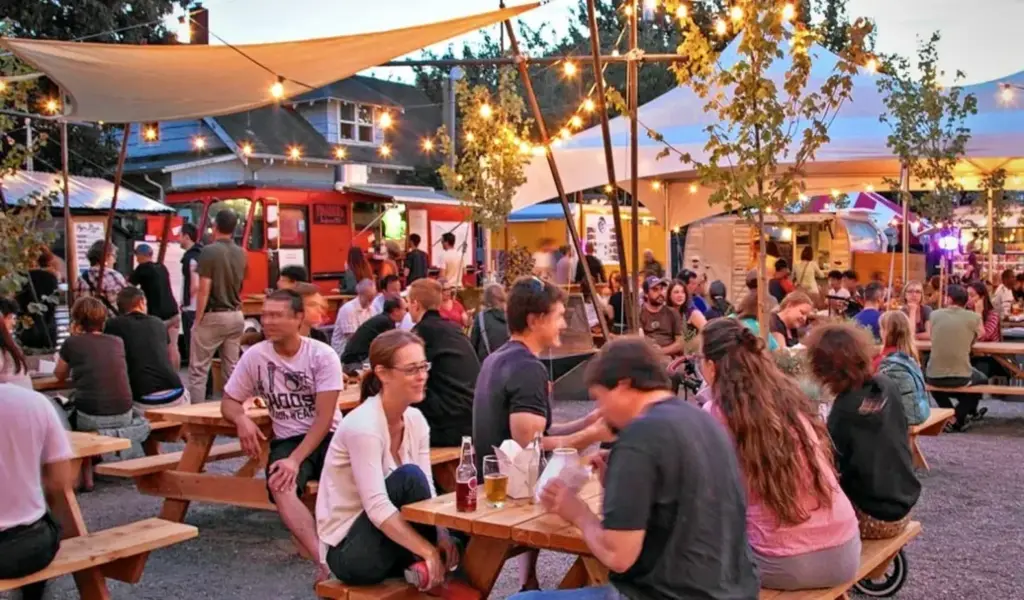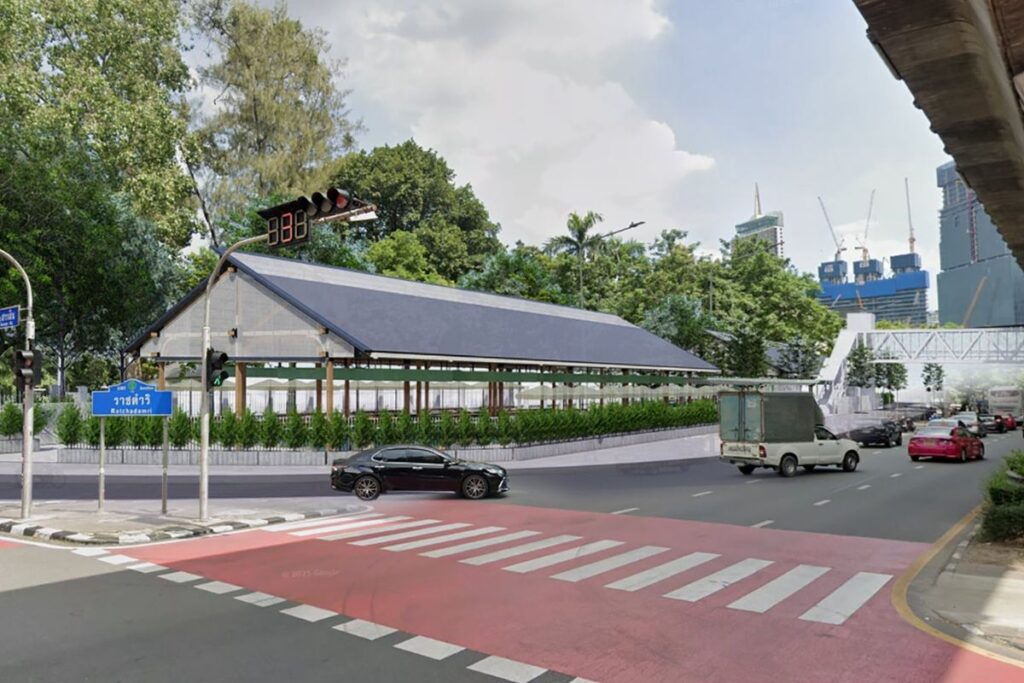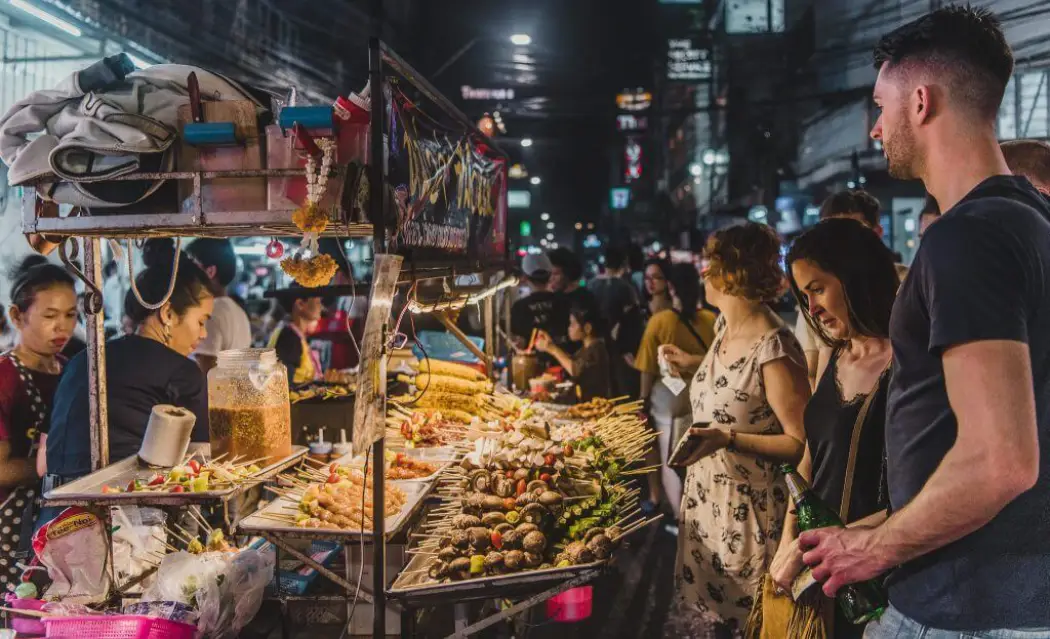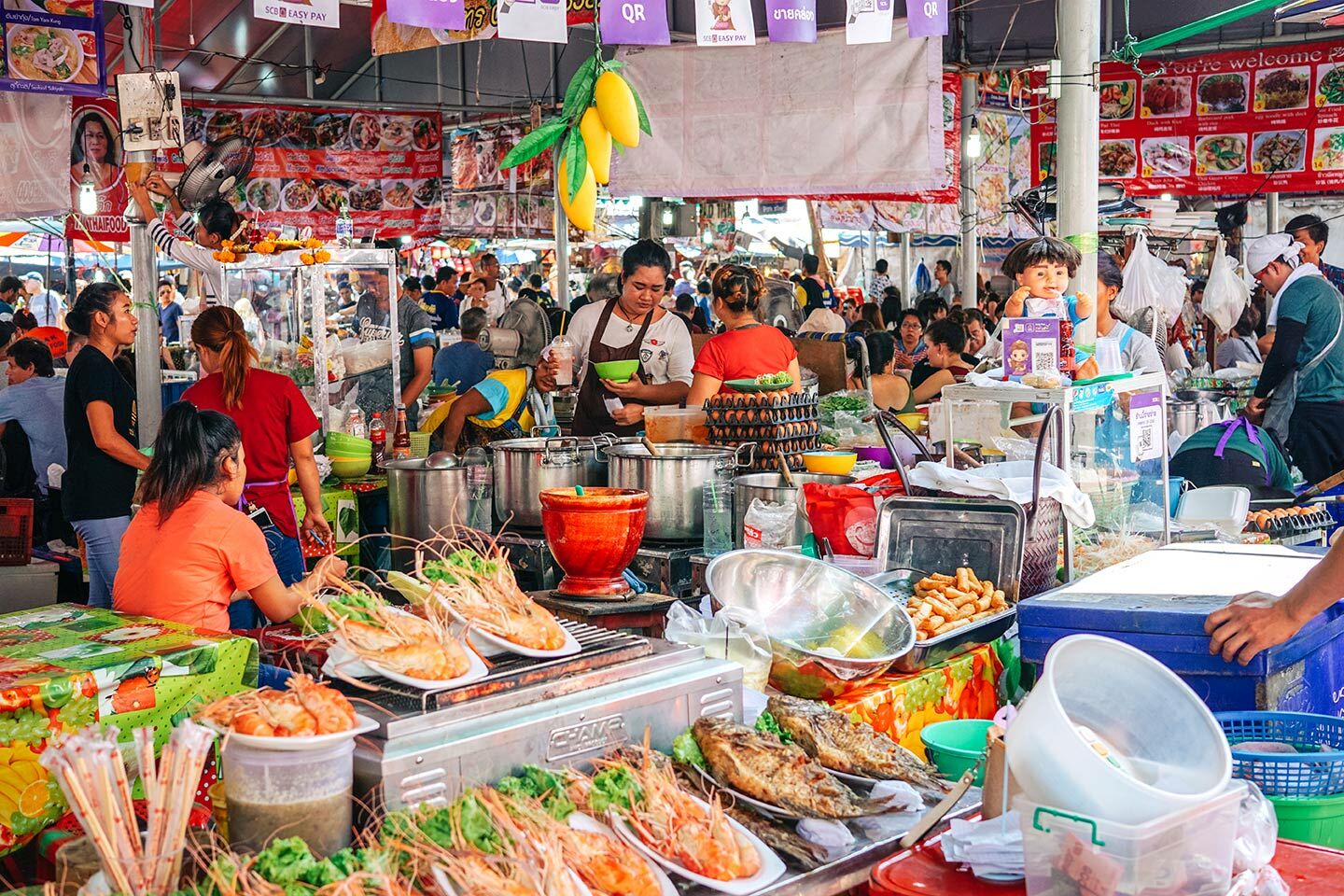BANGKOK – The street food culture has long defined the city of Bangkok, with local cooks serving up everything from spicy gai yang to fragrant tom yum, drawing hungry crowds along Chinatown’s alleys and Sukhumvit’s noisy sidewalks.
Street vendors call out daily, woks clatter, and footpaths fill with bright aromas and colourful food. Bangkok’s streets offer a unique mix of taste and energy that has drawn global praise, even earning its stalls Michelin stars. Yet big changes are on the horizon.
The Bangkok Metropolitan Administration (BMA) has started a major shift, aiming to tidy up the city’s street food with a new Hawker Centre next to Lumphini Park. This move, modelled after Singapore’s renowned food courts, looks to relocate vendors away from crowded pavements and into a controlled, cleaner spot.
The plan offers greater order, better hygiene and safety, and a clear structure. Still, many worry this may water down the raw charm, spontaneity, and heart that define the city’s street food.
A New Chapter for Bangkok’s Street Food
Set along busy Ratchadamri Road, Lumphini’s Hawker Centre is a major project. Construction began in June 2025 and is expected to finish in early 2026. The centre will feature an open-air design for 88 vendors during each shift: a morning slot running from 5 a.m. to 4 p.m. and an evening slot from 4 p.m. to midnight.
It promises not only affordable meals and stricter hygiene but a more consistent environment, in line with Governor Chadchart Sittipunt’s vision of organized street food. The approach mirrors Singapore’s system, where vendors work in tidy, central areas, with washing-up facilities, waste services, and food safety checks in place.
Bangkok’s busy sidewalks have become crowded—sometimes impassable—with food stalls and carts, especially in packed neighbourhoods. The BMA’s proposed solution is simple: offer vendors affordable places inside these centres while making the walkways clear for pedestrians.
“The original vendors affected by the footpath clean-up operation in the area will be prioritised for booking spaces at the centre,” says BMA spokesman Aekvarunyoo Amrapala. The intention is to help low-income vendors adapt and improve the overall way people move and eat around the city.
This isn’t Bangkok’s first try at a hawker centre. Locations like the Route 69 Mini Hawker Centre in Bang Khun Thian and the Khlong Bang Lamphu area already show how street food can shift from footpaths to managed hubs.
The BMA is in talks to use empty land and spaces under flyovers for even more centres. But Lumpini stands out because of its size, cost, and central place beside one of Bangkok’s greenest parks, hoping to set the tone for a neater, welcoming atmosphere.
Street Food: The Heart of Bangkok Life
To feel the weight of this change, one only needs to walk through a Bangkok food market at midday. Food stalls are cornerstones of both daily life and the city’s identity. From Jay Fai’s famous crab omelette to humble carts selling sticky rice and grilled chicken, street food is more than just quick meals.
In 2017, local vendors won Michelin stars, putting Bangkok on the map as a food capital. Hanoi’s streets are filled with sizzling sounds, aromatic stews, and the constant movement of cooks and customers. Stalls are everyday favourites for locals and an essential stop for tourists from around the world.
However, the city’s lively food scene does come with challenges. In the last decade, the BMA has cracked down on street stalls, focusing on health standards, traffic issues, and keeping walkways clear.
More than 10,000 vendors have lost their spaces in recent clean-up drives. These efforts have split opinion. Some see Bangkok’s unstructured food culture as the city’s lifeblood. Others argue that some control is needed for progress and safety.
The journey toward structured hawker centres has not been smooth. For many vendors, especially long-time stall holders like 60-year-old Ponthip Janjamsri, who sells fried meatballs, the change feels unsettling.
Her income relies on crowds passing by on familiar streets. Moving to a fixed location, even as high-profile as Lumphini, might mean less business. “I’m old, so they let me stay here,” she shared, voicing a common worry among older sellers.
Brick-and-mortar shop owners, on the other hand, often view street stalls as unfair competition or a barrier that hinders customers. In busy areas, food carts near shops may block entrances and add to foot traffic, leading to regular disputes.
The Hawker Centre plan hopes to end this friction by clearing pavements such as Sarasin Road, relocating vendors, and giving shop owners more space to work.
Still, getting everyone on board will take work. Vendors worry about the rental fees—even if called “low rent”—plus whether enough customers will follow them to the centre. Other attempts at relocation in Bangkok have led to empty food halls when stalls didn’t attract enough trade.
Comments on forums like ASEAN NOW suggest skepticism remains, with users pointing out that vendors follow customers, not government schedules. The new centre’s location near both Lumphini Park and central city foot traffic may help, but its success comes down to whether both customers and sellers turn up.
Singapore as a Reference Point
Singapore’s hawker centres offer a working example of how urban street food can be neat and appealing. These spaces are clean, attract locals and visitors, and offer affordable, diverse meals. Many stalls carry a proud tradition and have developed loyal followings. The BMA has drawn on this model for the Bangkok project, focusing on organized layouts, ventilation, washing stations, and clear waste systems.
Still, Bangkok’s food culture is distinctly its own. The city is much bigger, more chaotic, and its food stalls thrive on happenstance and personal connections. Critics worry that by forcing street food into set locations, the natural buzz and original style might get lost.
In online discussions, concerns have been raised that the Lumphini Hawker Centre risks feeling like a standard food court, rather than an authentic showcase of Thai food. Singapore’s compact size and reliable transport help its centres work well. Bangkok, spread out and plagued by traffic, may find mustering crowds less easy for centralized sites.
Bangkok’s street sellers also bring their approach and charm. Every stall, whether operating from a weathered cart or under a sunshade in the alley, offers a singular blend of taste, atmosphere, and friendly back-and-forth. Replicating this mood inside a new centre will be a challenge, risking the very appeal that defines how locals and visitors experience the city’s food.
The BMA claims the new centre will keep the spirit of Bangkok’s food culture intact, while raising hygiene and safety. The plan includes a range of local food, drinks, and fresh products to keep things diverse and affordable. Environmentally, the project will temporarily move trees during the build and return them later, hinting at a responsible approach.
Bangkok at a Turning Point
The worry, though, is that the unique soul of Bangkok’s street food could fade away. Some vendors may embrace brighter lights and better facilities. Others will want to stick with familiar walkways and daily routines built up over the years.
The BMA needs to create an environment that feels as lively and genuine as the old markets, not just clean and controlled. Longer opening hours, from early morning to midnight, aim to match the natural rhythms of city life, from morning exercise to late dinners. But the big test is whether the new centre captures those surprise delights found in distant corners and bustling alleys.
With the opening of the Lumphini Hawker Centre, Bangkok sits at a turning point. The project aims to give the city’s well-loved food scene a boost, making it cleaner and safer while managing public spaces better. But some fear this shift could weaken the creative force and flexibility that made food stalls so famous to begin with.
Change often brings mixed feelings, and the question remains: Can the city keep its vibrant, quirky street food scene alive in a modern, controlled setting? For now, grilled satay and the chatter of outdoor diners still fill Bangkok’s nights.
As 2026 approaches, attention will turn to Lumphini Park to see whether this Hawker Centre sets a new gold standard for urban street food or marks a move away from the side-street eateries that have shaped Bangkok’s flavour and character for decades. Whatever happens, the city’s deep love for street food will remain at the heart of daily life.




